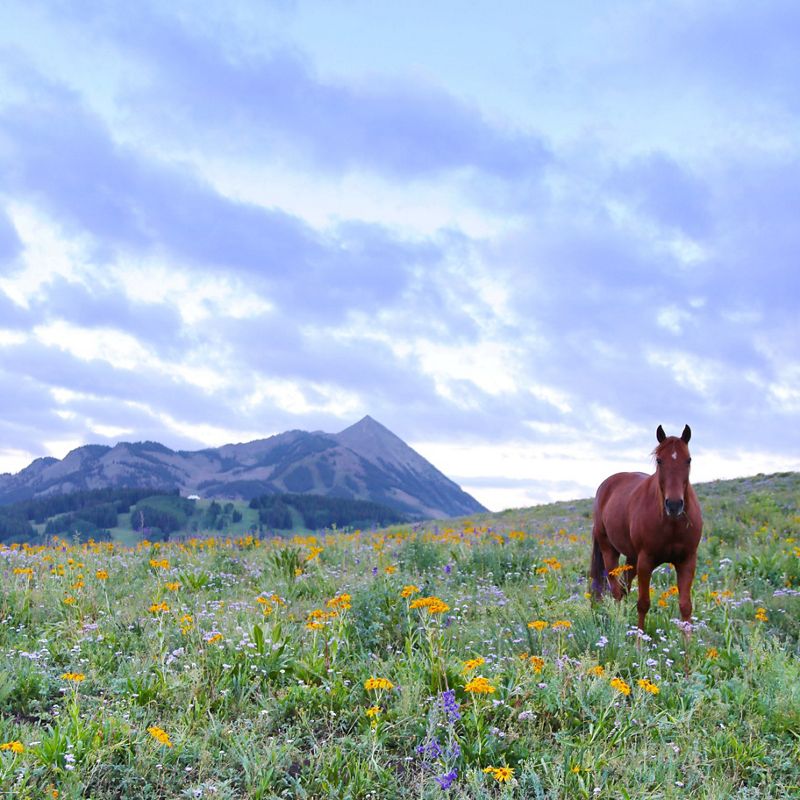
Nature Podcasts for All
Tune in to Mountain & Prairie for exclusive conservation stories, updates, advice and more from TNC leaders and host Ed Roberson.
Add some nature to your queue!
On the fourth Tuesday of every month, the Mountain & Prairie podcast brings you conversations with a wide range of The Nature Conservancy’s leaders, partners, collaborators and stakeholders, highlighting the myriad of conservation challenges, opportunities and solutions here in the American West.
Recognized by the Aspen Institute, Apple Podcasts, High Country News, Colorado Parks and Wildlife and more—and regularly ranked in the top ten of its category on the podcast charts—Mountain & Prairie features long-form conversations with innovators of the American West. Through informal yet substantive conversations, conservationist Ed Roberson introduces you to these fascinating characters, giving you a better understanding of their careers, influences and outlooks, as well as a deeper appreciation for life in the American West.
Get conservation updates (and new episodes!)
Sign up to receive monthly updates from your state or region and learn how you can get involved.
Latest Release
Breakthrough Moment for Colorado Conservation
May 2025 | Developed through years of planning, dialogue and consensus-building across hundreds of organizations and communities, the State of Colorado announced the launch of its Outdoors Strategy—a collaborative roadmap designed to align the state’s conservation, outdoor recreation and climate resilience efforts for decades to come.
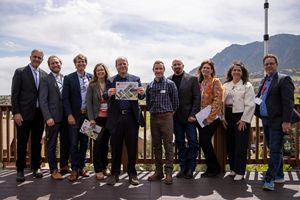
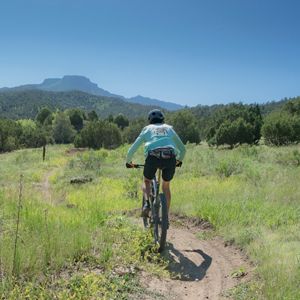
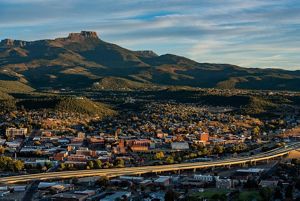
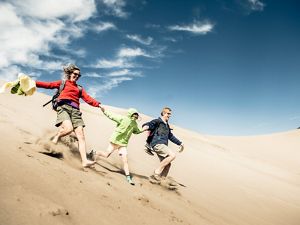

Colorado's Outdoor Strategy: Colorado announced its Outdoors Strategy—a comprehensive, collaborative roadmap designed to align the state’s conservation and outdoor recreation efforts for decades to come. © TNC

Bikers at Fishers Peak St Park: At Fishers Peak State Park in Trinidad, Colorado, recreation and preservation go hand in hand. © Morgan Heim

Trinidad, Colorado: The scenic town of Trinidad, Colorado, with Fishers Peak in the background. © Cameron Davidson

Running down dunes: at the Great Sand Dunes National Park in Colorado. © Nick Hall
Biodiversity
Wyoming’s Wildlife Migrations
April 2025 | In this episode, Sara Domek, TNC Wyoming's Wildlife Migration Director, joins Ed Roberson to tell us the stories and science behind wildlife migration (including insights into Wyoming’s longest mule deer migration), challenges posed by barriers like fences, benefits of wildlife crossings and much more.
Listen here
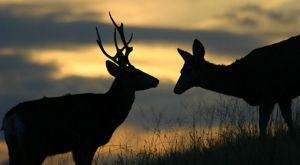
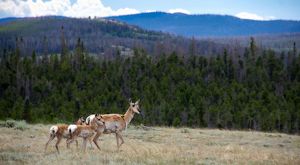

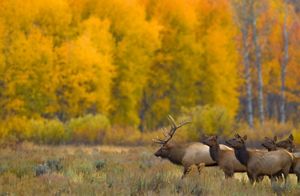

Fall on the Snake River: A herd of elk cross the Snake River in Wyoming. © Scott Copeland 2008

Mule Deer Silhouette: The future of migrating wildlife depends on our ability to ensure they can continue their way of life. © Richard Barry

Pronghorn Antelope: A family of antelope walk along a ridge in Wyoming. © Amelia Marlatt/TNC

On the Hunt: A coyote walks through sagebrush in Yellowstone National Park. © Dane Madsen/TNC Photo Contest 2023

Rocky Mountain Elk: Elk gather during mating season in the Greater Yellowstone. © Scott Copeland
Stories, Science, and the Southern High Plains
January 2025 | As a Senior Conservation Ecologist at TNC for many decades now, Chris Pague has been working on the frontlines of TNC’s science-based conservation efforts. From the tiniest prairie plants to the plains’ largest mammals, discover the magnificence of the Southern High Plains.
Listen here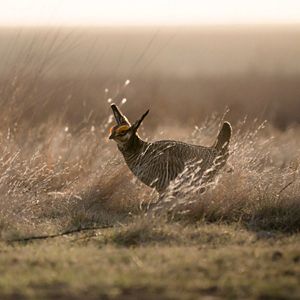


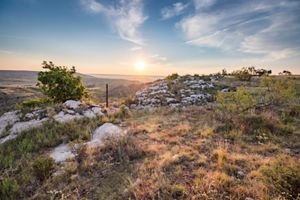
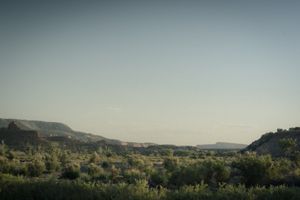

Lesser prairie chicken: More than half of all lesser prairie chickens in the world are found in western Kansas, where the Nature Conservancy’s Smoky Valley Ranch provides crucial habitat. © Morgan Heim

Wildlife Migration: The Southern High Plains of Colorado, Kansas, New Mexico, Oklahoma and Texas are home to pronghorn, grassland birds and more iconic wildlife. © TNC/Chip Carroon

Buffalo herds: TNC is working to conserve a network of land and water across state boundaries that boosts climate resilience, preserves biodiversity and supports sustainable agriculture. © Morgan Heim

Rock Creek Ranch: Through TNC's Southern High Plains Initiative, this ranch is a historic opportunity for conservation in the Texas Panhandle. © Brent Cavanaugh

Rolling Grasslands and Plains: The Southern High Plains span over 71 million acres in the United States. © Morgan Heim
The Sagebrush Sea Is Vanishing
September 2023 | The Sagebrush Sea, one of the largest natural systems in North America, is shrinking at an alarming rate—1 million acres per year. Matt Cahill, TNC's Sagebrush Sea program director, joins Ed Roberson to dive into the groundbreaking innovation, collaboration and partnerships we are applying to save this diverse ecosystem.
Listen here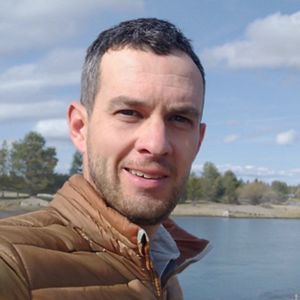
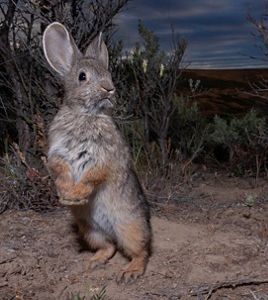
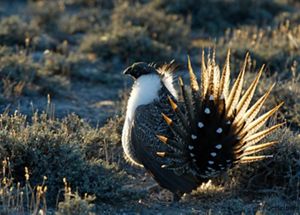
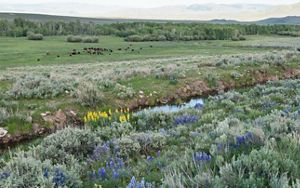
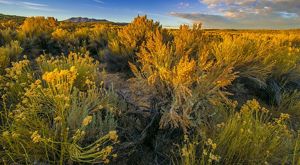

Matt Cahill: The Nature Conservancy's Sagebrush Sea Program Director. © Matt Cahill

The Endangered Pygmy Rabbit: Pygmy rabbits rely on a landscape of mature sagebrush that has been repeatedly damaged or fragmented by development and extreme wildfires. © Morgan Heim

Greater sage-grouse: The sagebrush sea provides habitat for wildlife like the greater sage-grouse. © Tatiana Gettelman

Native Forbs and Sagebrush: An abundance of grass, sagebrush, and native wildflowers at the McCoy Ranch in Montana. © Thomas Lee

Rolling Grasslands and Plains: Sagebrush once stretched across almost 500,000 square miles from the Dakotas to California. © Chip Carroon
Bolstering Biodiversity in Arizona and Beyond
May 2024 | Arizona is one of the largest and most biodiverse states in the U.S., which creates unique conservation challenges and opportunities—both in its arid, wide-open landscapes and densely populated urban centers. TNC AZ State Director Dan Stellar joins Ed to discuss forest heath, rivers, aquifers, outdoor recreation and resilient cities.
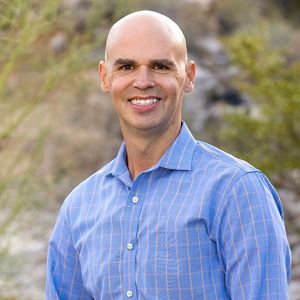
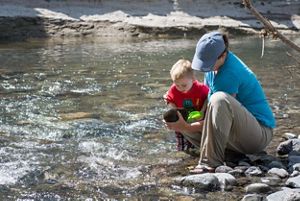
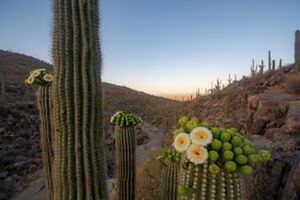
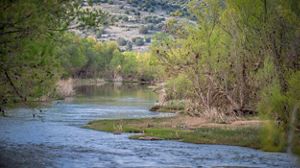

Daniel Stellar: Dan Stellar is state director for the Arizona Chapter of The Nature Conservancy (TNC). © 2022 Mark Skalny / Mark Skalny Photography

The Verde River: The Verde River, an important river in the Colorado River system, where TNC is working with local agriculture producers and communities to increase river flows. © Rick Triana Photography

The Mighty Saguaro: In pre-dawn light, a might saguaro cactus shows off some of her first flowers of the season. © Ian Adrian/TNC Photo Contest 2022

The Verde River: The Verde River, an important river in the Colorado River system. © Rick Triana
Climate
Economics, Energy, and Community Pride
January 2025 | Gillette and Campbell County, WY have long been leaders in U.S. coal production for decades. Over the past 15 years, coal production has decreased by 1/2, which will have far-reaching consequences for WY and the West. We're working to find sustainable, economically viable solutions to the energy transition in these communities.

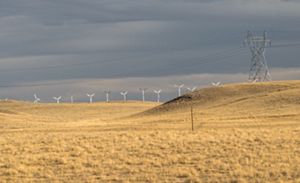
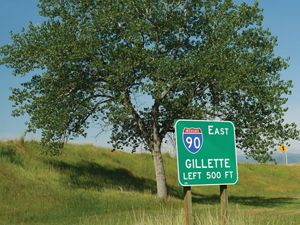


Community Partnership: TNC’s Justin Loyka and Rusty Bell, director of Gillette’s Office of Economic Transition. © Jake Bolster

Wyoming's Energy Transistion: Increasing transmission capacity will be key to delivering renewable energy to demand centers across Wyoming and other states. © Mendenhall Olga

Gillette, WY: Gillette and Campbell County, Wyoming have long been leaders in the United States’ coal production business and have been a foundation of West’s economy for decades. © Amadeuxtx

A Renewable Future: Smart siting of renewable energy sources, like this solar farm, can help communities and wildlife. © 2023 PeopleImages.com—Yuri A/Shutterstock
The West’s Renewable Energy Transition
June 2024 | What's going on in the world of renewable energy? TNC renewable energy and climate experts Peter Gower and Chris Menges join Ed to provide digestible updates on our transition from fossil fuels to renewables, as we work to find solutions that protect lands, wildlife and communities.
Listen here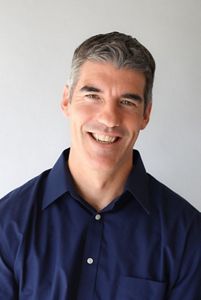

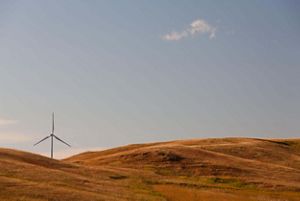
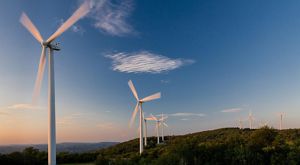
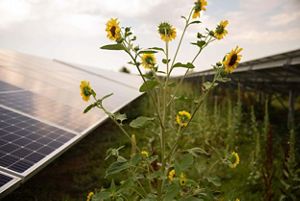

Peter Gower: Peter is TNC's Climate and Renewable Energy Program Director for the Western United States and Canada Divisions. © Courtesy Peter Gower

Chris Menges: Chris is the Director of Climate Action for TNC in Colorado. © TNC

Renewable Energy: Wind turbines above TNC's Hole In The Mountain Prairie near Lake Benton, Minnesota. © Richard Hamilton Smith

The transition: TNC is advancing transition from fossil fuels to renewables, working to find solutions that protect and benefit working lands, natural landscapes, wildlife, and communities. © Kent Mason

Agrivoltaics: TNC is using the learnings gleaned from Jack’s Solar Farm and planting vegetation with hopes to create a wildlife-friendly solar site. © Joanna Kulesza
Conservation in the Cascades
March 2024 | Dr. Emily Howe is an aquatic ecologist with the Washington chapter of TNC. Combining cutting-edge science with Indigenous knowledge, Emily and TNC are making great progress toward finding solutions that can help with everything from increasing the depth and duration of snowpack in the Cascades to restoring salmon habitat.
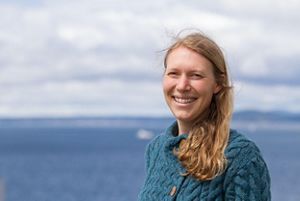
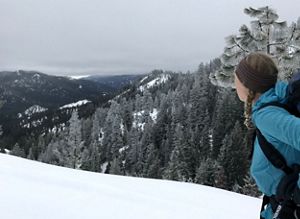
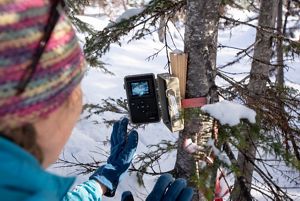
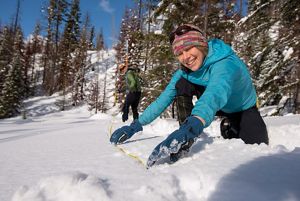

Dr. Emily Howe: Emily is an aquatic ecologist with the Washington chapter of TNC and holds a Ph.D. from the School of Aquatic and Fishery Sciences at the University of Washington. © Kelly Compton

Science-led: Emily’s projects stretch from the high peaks of the North Cascades all the way down to the estuary of Port Susan Bay. © Hannah Letinich

Research: TNC staff visit a Snotel site, check time lapse camera status and measure snowpack. Emily Howe checks on an outdoor time-lapse camera. © Hannah Letinich

Washington State: TNC staff visit a Snotel site, check time lapse camera status and measure snowpack. Emily Howe measures snow depth at the perimeter of the snotel site. © Hannah Letinich
Durable Conservation and Collective Action
December 2023 | Nature had a year of great conservation progress and innovation, and 2024 will be even greater. In this podcast episode, discover TNC's top priorities that we're working to accomplish in Colorado and beyond.
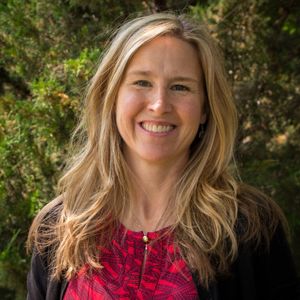

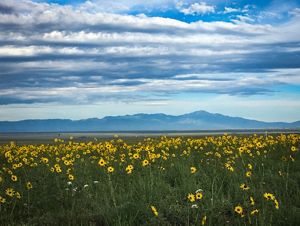


Paige Lewis: Deputy State Director and Director of Conservation Programs for The Nature Conservancy in Colorado. © Lauryn Wachs/TNC

Conservation: TNC is working in every landscape of Colorado to protect the lands and waters on which all life depends. © Ethan Herrold/TNC Photo Contest 2019

2023 Acquisitions: TNC CO completed the first phase of acquiring Bohart Ranch, 48,000 acres in southeast Colorado. © Tegan May/TNC

Collaborative Water Projects: TNC is working with partners, communities, Tribal Nations, and other stakeholders to ensure a sustainable future for the Colorado River. © Erika Nortemann/TNC
Effecting Change Through Authentic Conversation
February 2023 | Dr. Katharine Hayhoe is a world-renowned climate scientist, professor, and chief scientist for TNC. Ed and Katharine dive into a riveting conversation about climate opportunities and challenges facing the West and how to have challenging conversations with smart people who do not think that climate change is a threat.

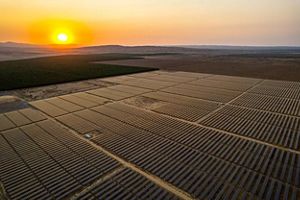
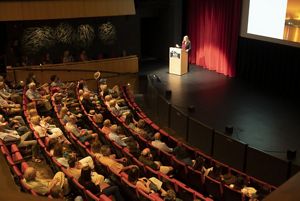
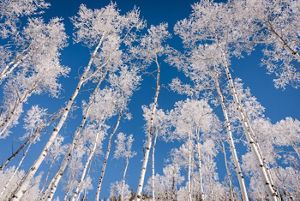

Dr. Katharine Hayhoe: Chief Scientist for The Nature Conservancy. © Ashley Rodgers / Texas Tech University

Solar project: Aerial image of the Maricopa West solar project site in the San Joaquin Valley, near the town of Taft, California. © Stuart Palley

Hope in Action: Katharine Hayhoe speaking in Wyoming about how to talk about climate change by first finding common ground. © Noah Waldron

Aspen Popsicles: The aspen forest in Steamboat Springs, CO was frozen and stunning with a deep blue sky above on January 21, 2019. © Anita Merrigan/TNC Photo Contest 2019
Creating Opportunities in Uncertain Times
January 2023 | How did the pandemic impact and alter conservation? What are the different pathways to a career in conservation? In this episode, Ed Roberson and Carlos Fernandez, state director for The Nature Conservancy in Colorado, answer these questions and more to kick off the podcast partnership.

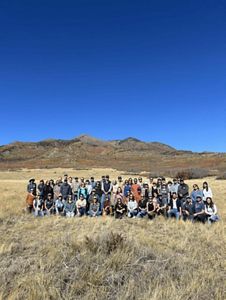

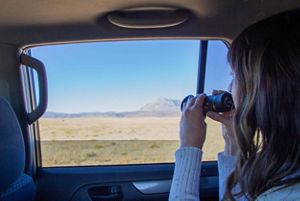

Carlos Fernandez: State Director for The Nature Conservancy in Colorado. © Lauryn Wachs/TNC

TNC Colorado Staff Retreat: In Fall of 2023, TNC Colorado staff gathered at TNC's Silver Mountain Ranch Preserve for annual staff retreat. © Alexa Garcia/TNC

Community Fly Fishing at Phantom Canyon: Community Fly Fishing (CFF) at TNC's Phantom Canyon Preserve. In 2023, TNC began hosting Austin Campbell and CFF at Phantom Canyon. CFF increases access to the outdoors by creating free fly fishing learning opportunities across Colorado for those who do not have experience. © Ivan Orsic

In the field: TNC staff work in a variety of environments, from an office desk to our most remote preserves. © Anna Sofia Vera/TNC
Lands
The Creation of Great Sand Dunes National Park
2024 | Back in 1999, TNC acquired the Medano-Zapata Ranch in the San Luis Valley due to the significant natural value of the land, with species found nowhere else in the world. In this episode, Ed and Nancy Fishbein dive into the history of the ranch, the conservation bison herd that calls the land home, and the establishment of the national park.
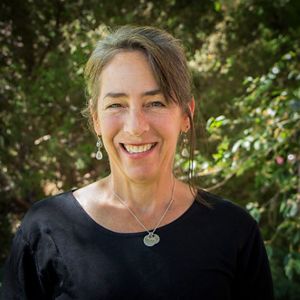
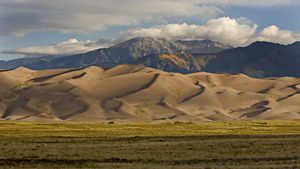
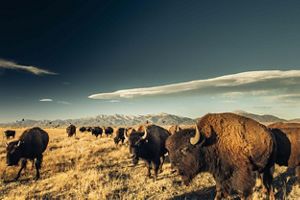
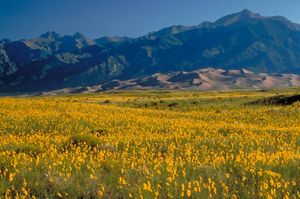

Nancy Fishbein: Director of Resilient Lands for The Nature Conservancy in Colorado. © Lauryn Wachs

San Luis Valley: Sunrise at Great Sand Dunes National Park and Preserve. © Erika Nortemann/TNC

Conservation Bison Herd: Bison grazing on the Zapata Ranch with the Great Sand Dunes National Park and Sangre de Cristo mountains in the background in Colorado. © Nick Hall

Diverse landscape: This diverse habitat view, photographed from the Medano Zapata ranch, shows flowering prairie, The Great Sand Dunes National Park and the distant Sangre de Cristo mountains of southern Colorado. © Wendy Shattil & Bob Rozinski
Collaboration in the Northern Great Plains
October 2024 | The Matador Ranch, a 60,000-acre TNC-owned property near Dodson, MT is home to an innovative conservation initiative known as a grassbank, which offers ranchers grazing access to rich grasses in exchange for adopting sustainable practices. Discover how grassbanks provide hopeful opportunity in times of drought.
Listen here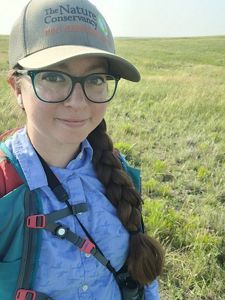
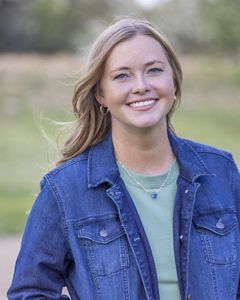

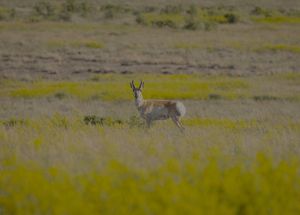
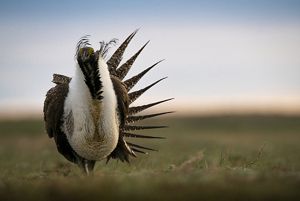

Kelsey Molloy: Kelsey Molloy is the Northern Great Plains Director at The Nature Conservancy. © TNC

Angel DeVries: Angel DeVries is the Executive Director of the Ranchers Stewardship Alliance (RSA). © RSA

Grassbanks: This partnership opportunity offers ranchers grazing access to rich grasses in exchange for adopting sustainable practices on their own property. © Brett Kuxhausen

Pronghorn: Through TNC and partners' efforts at Matador Ranch, species like pronghorn can coexist with ranching and have plentiful habitat to forage and thrive. © Brett Kuxhausen

Greater Sage-Grouse: The greater sage-grouse thrives in healthy grassland habitats like those found at the Matador Ranch. © Jeremy Roberts | Conservation Media LLC
Tales from the Dugout Ranch
August 2024 | In 1997, Heidi Redd sold her family’s Utah ranch to TNC, located at the gateway to Canyonlands NP and within the boundaries of Bears Ears National Monument, in a historic conservation deal to protect the land from development. Discover the rich history and partnership on the ranch.
Listen here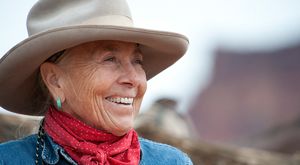
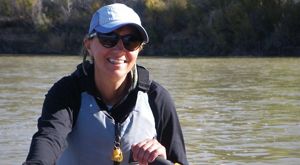
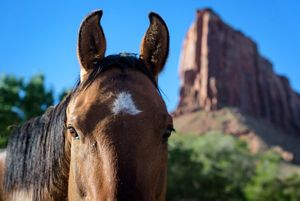
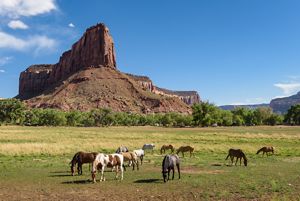
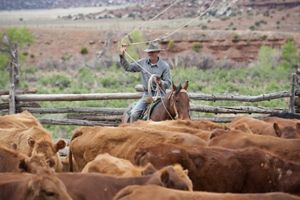

Heidi Redd: Heidi is a renowned rancher, conservationist, author, and member of the National Cowgirl Museum’s Hall of Fame. © Ted Wood

Sue Bellagamba: Sue serves as Canyonlands Regional Director at TNC, and for more than thirty years, she has worked to protect the lands and waters of southeastern Utah. © TNC

Canyonlands Friends: The Canyonlands Research Center is located within Dugout Ranch, a working ranch that doubles as a home to ranch lessee Heidi Redd and several ranch animals. © Stuart Ruckman Photography

Dugout Ranch: Horses graze in the landscape of the Dugout Ranch in Utah. © Stuart Ruckman

Herding: Topher Dalrymple ropes the calves in the coral at the Dugout Ranch, Utah. © Ted Wood
Keeping Jackson Hole Wild and Beautiful
February 2024 | Why do we practice prescribed fire? What did we learn from the historic 1988 fires in Yellowstone? Kevin Krasnow, fire ecologist and Conservation Director for the Jackson Hole Conservation Alliance, joins Ed to discuss the important role of wildfire in the Greater Yellowstone Ecosystem.
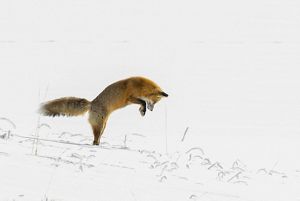
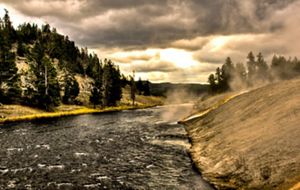
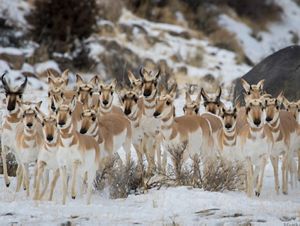
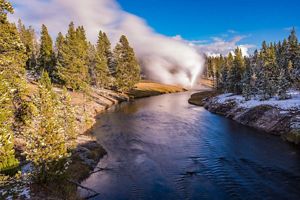

Winter in Yellowstone National: This fox spent a great deal of time trying to catch a mouse under the snow in a meadow. This time the mouse won and the fox went elsewhere. © Lin Teichman/TNC Photo Contest

Yellowstone National Park: An overcast river's edge in Yellowstone National Park. © Dylan Rorabaugh

Biodiversity: A herd of pronghorn migrate through Yellowstone National Park. © Matthew Scott / TNC Photo Contest

Riverside Geyser: Riverside Geyser // While photographing Riverside Geyser in Yellowstone National Park in the USA, I experimented with a slow shutter speed to put a little movement into this spectacularly located geyser. © Mark Johnson/TNC Photo Contest 2021
Western Wildfires and Forest Health
June 2023 | What’s the outlook for wildfire season? How can beavers play a role in fire mitigation? Tune in as Rob Addington, TNC's director of forest and fire programs in Colorado, answers these questions and more, diving into our forest restoration and climate resilience work in Colorado.
Listen here
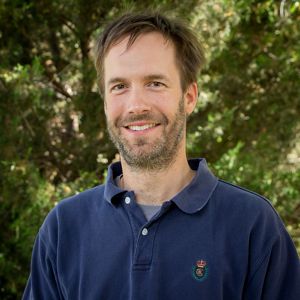
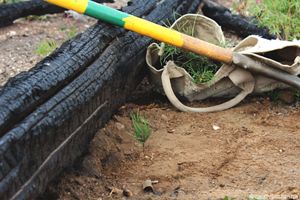
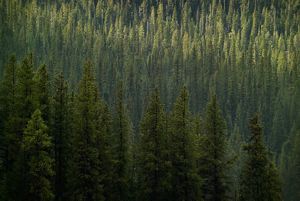
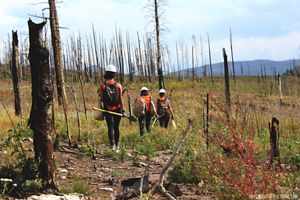

Edge of Burn: Parkview Mountain, west of CO-125 in Grand County, CO. © Jason Houston

Rob Addington: Rob is the Director of Forest and Fire Programs at The Nature Conservancy in Colorado. © Lauryn Wachs/TNC

Reforestation: Replanting a double-burn scar forest - first burned by the High Park fire in 2012 and again by the Cameron Peak fire in 2020. © PrylinskiProductions.

Lodgepole Pine: TNC and partners are working hard to find collaborative, creative, and effective solutions to the challenges facing our forests here in the West. © Mark Godfrey/TNC

Collaboration: Alongside partners and volunteers, TNC has been leading and implementing some of the most innovative forest health work in the country. © PrylinskiProductions
Grassland Conservation on the Southern High Plains
April 2023 | Did you know grasslands are the least protected ecosystem in the world? Matt Moorhead and Galen Guerrero-Murphy join Ed Roberson to dive into TNC's collaborative and innovative conservation work in the Southern High Plains, 71 million acres across Colorado, Kansas, New Mexico, Oklahoma and Texas.
Listen here
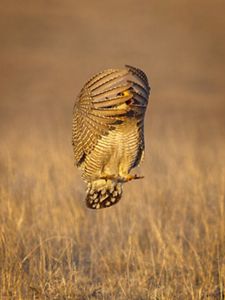
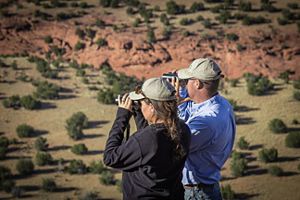
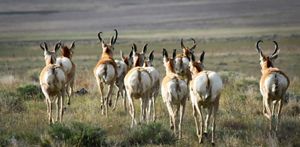


Bartlett Mesa: Acquisition of the Bartlett Mesa property in New Mexico builds on cross-border conservation and provides benefits for people and nature. © Brad Cory/TNC

Biodiversity: The lesser prairie chicken is emblematic of grasslands. © Mike Krehbiel/TNC Photo Contest 2023

Building Relationships: TNC and partners are building long-term partnerships with landowners and conservation partners to find win-win solutions that can be mutually beneficial for all parties. © Lauryn Wachs/TNC

Habitat Connectivity: Pronghorn have the longest land migration of mammals in the U.S. Conservation of the Southern High Plains is critical to their habitat connectivity. © Steven G. Mlodinow

Silver Mountain Ranch Preserve: This 14,000-acre working cattle and bison ranch in Colorado has a broad range of habitats and wildlife, such as elk, mule deer, bighorn sheep and black bear. © Jason Houston
Waters
A Simple Approach to Riparian Restoration
July 2024 | Do you like beavers? Well then, you'll enjoy this episode. Discover how TNC experts are improving our streams in the West by adding simple structures made of natural materials to simulate processes like beaver dams in streams and wetlands.
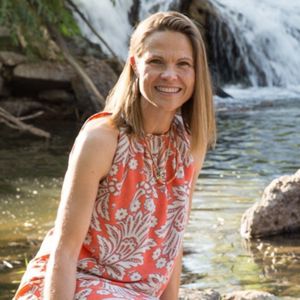
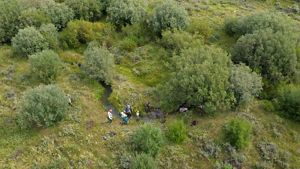
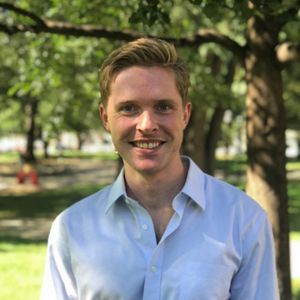
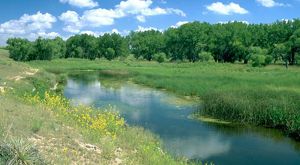

Nancy Smith: Conservation Director for TNC's Colorado River Program. © TNC

Riparian Restoration: An aerial view of stream restoration work. © Jeremy Roberts

Austin Rempel: Riparian Restoration Program Manager at The Nature Conservancy. © TNC

Wetlands: Both Nancy and Austin are working on the front lines of some of the West’s most innovative water and habitat conservation projects. © Harold E. Malde
Building Trust with Indigenous Communities
April 2024 | Celene Hawkins, Tribal Water Partnerships Program Director at TNC's Colorado River Program, and Izabella Ruffino, Tribal and Indigenous Engagement Program Manager at TNC in Colorado, join Ed to discuss building trust and solid relationships, recent collaborations with Tribal Nations and recommended resources for deeper learning.
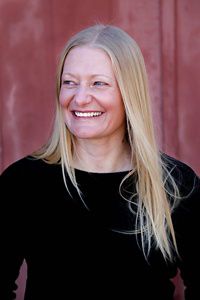
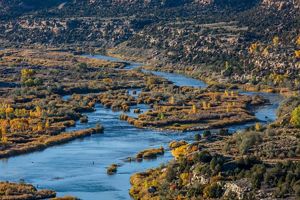



Celene Hawkins: Celene is the Tribal Water Partnerships Program Director at The Nature Conservancy’s Colorado River Program. © Celene Hawkins

San Juan River: The Conservancy joined state, federal and Native American partners in a comprehensive effort to restore the river, a major waterway of the Colorado River Basin. © Erika Nortemann/TNC

Izabella Ruffino: Tribal and Indigenous Engagement Program Manager at the Colorado Chapter for The Nature Conservancy. © Izabella Ruffino

San Juan River. Farmington, NM: July 2023. San Juan River, Farmington, New Mexico. © Roberto Rosales
Crafting Conservation Policy
March 2025 | In this episode, Aaron Citron, Associate Director of External Affairs, joins Ed Roberson to share a detailed look at how conservation policy gets made—from coalition-building and legislative drafting to navigating complex relationships.
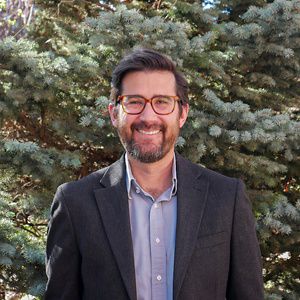
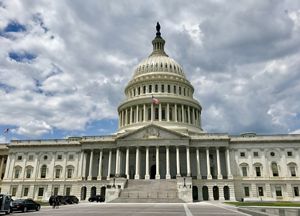
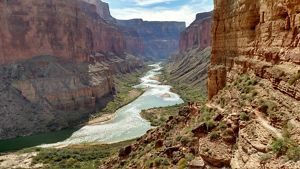


Aaron Citron: Aaron is the Associate Director of External Affairs at The Nature Conservancy in Colorado. © TNC

US Capitol: TNC works across local, state and federal policy. © Jess Ottney

Grand Canyon: Colorado River and Grand Canyon. © Eloise Kendy

Bill Signing: CO governor Jared Polis signing a bill to appropriate $5M to the Colorado Tree Nursery for reforestation purposes. Aaron Citron, TNC Policy Associate, in photo on very left. © Aaron Citron/TNC
Resilient Rivers, Agriculture and Communities
November 2023 | Water experts Diana Lane and Aaron Derwingson join Ed Roberson to discuss some of Colorado's most urgent water-related challenges and opportunities and how TNC is working with a wide range of stakeholders to find mutually beneficial solutions.
Listen here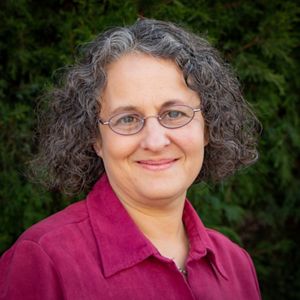
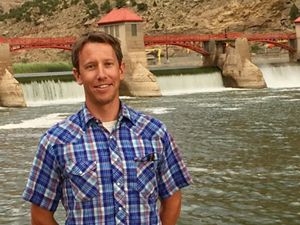
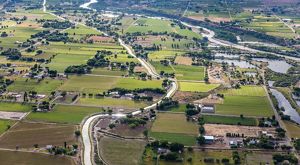
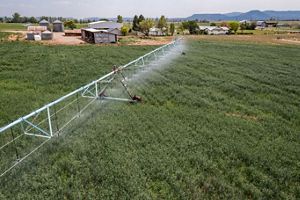


Diana Lane: Director of Sustainable Food and Water, Colorado. © Lauryn Wachs

Aaron Derwingson: Aaron is The Nature Conservancy's Water Projects Director, Colorado River Program. © The Nature Conservancy

Colorado Fields: Agricultural fields near Grand Junction, CO. © The Nature Conservancy (Ken Geiger)

Reducing Water Demands: Irrigation for fields on Florida Mesa south of Durango, CO is fed by the Florida River. June 17, 2021 © Jason Houston

Science Water Quality: Elizabeth Gray scoops water with her hands, Potomac River Gorge, Maryland. © Karine Aigner
Solving Challenges with Ancient Tribal Wisdom
July 2023 | As vice chair of the Southern Ute Indian Tribe, trustee for TNC Colorado and the first-ever Tribal member on the Colorado Water Conservation Board, discover how Lorelei Cloud is applying her expertise to complex challenges in the basin.
Listen here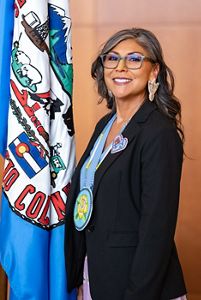
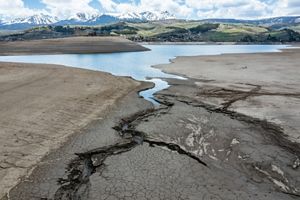
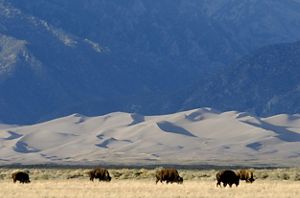
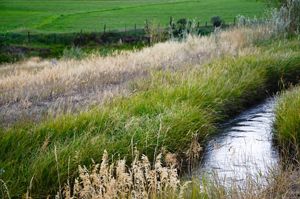
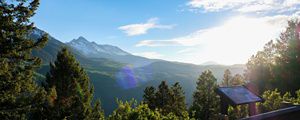

Lorelei Cloud: Lorelei Cloud is the Vice Chairman of the Southern Ute Indian Tribal Council, and a board member for the Colorado Chapter of The Nature Conservancy. © Jeremy Wade Shockley

Green Mountain Reservoir: Low water levels in Green Mountain Reservoir in Heeney north of Silverthorn, CO. May 20, 2021. Drone photograph. © Jason Houston

Grazing Buffalo Herd: A buffalo herd grazes in grasslands at the base of the Sangre de Cristo Mountains adjacent to the Great Sand Dunes National Park at Medano-Zapata Ranch in southern Colorado. © Dave Showalter

Streams: A stream flows through an agricultural landscape. © Jeremy Wade Shockley

SUIT Mountain: A beautiful landscape of snow-capped mountains and pine trees. © Trennie Collins
Innovation in the Colorado River Basin
March 2023 | Taylor Hawes, TNC's Colorado River program director, provides background on the river basin’s challenges and how TNC is working to solve these problems by building community support, working collaboratively with Tribal Nations and helping agricultural producers become more efficient.
Listen here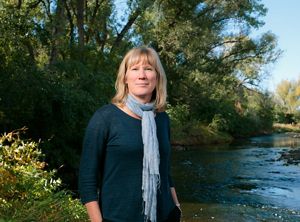
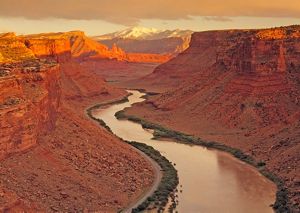

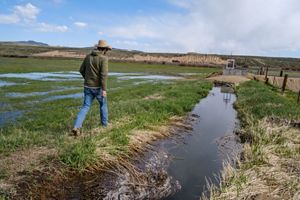
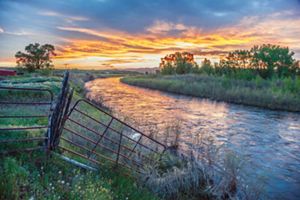

Taylor Hawes: Director, Colorado River Program © Matthew Staver

Colorado River: Snow is an important factor in determining the amount of water that flows into the Colorado River system each year. © Tom Till

Fly Fishing: Fishing the Blue River in Summit County, Colorado. © Lauryn Wachs/TNC

Collaboration: TNC and partners are collaborating with agricultural producers to help them become more efficient. © Jason Houston

Yampa River: Sunset on the Yampa River at Carpenter Ranch in Northwest Colorado. © John Fielder
Communities
Land and Stewardship in the Blackfeet Nation
February 2025 | In this episode, Helen Augare Carlson and Dylan DesRosier of the Blackfeet Nation join host Ed Roberson to discuss why Indigenous leadership is crucial for the future of land stewardship, along with efforts such as the Chief Mountain Initiative, in a conversation rich with wisdom, humor and insight.

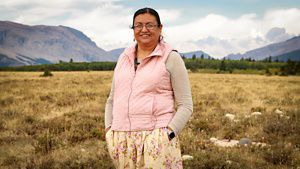
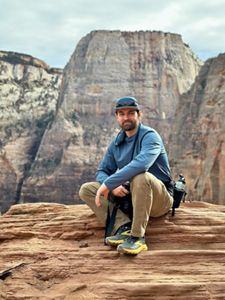
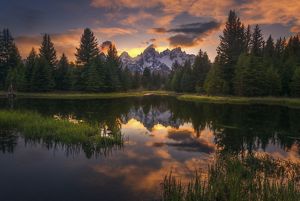

Blackfoot River Corridor: Aerial view of the Blackfoot River corridor area in the Nature Conservancy's Great Western Checkerboards Project, Montana. © Steven Gnam

Helen Augare Carlson: Helen is the Chair of the Piikani Studies Division at Blackfeet Community College. © Helen Augare Carlson

Dylan DesRosier: Dylan is the Blackfeet Program Manager with The Nature Conservancy in Montana. © Dylan DesRosier

The Landing: One of the classic scenes in the Grand Tetons. A perfect reflection of the Teton grouping from the bank of the Snake River. © Matt Meisenheimer/TNC Photo Contest 2019
Science as a Catalyst for Human Connection
November 2024 | Nichole Barger is an ecologist, former university professor, and the current deputy chief scientist and lead global scientist for The Nature Conservancy. Whether she’s teaching, researching, or working with conservation stakeholders, she never loses sight of the importance of human connection.
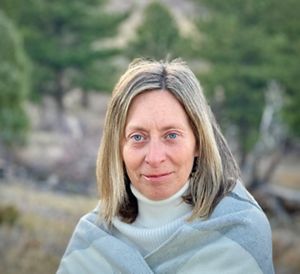
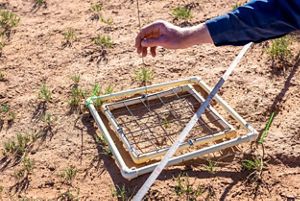

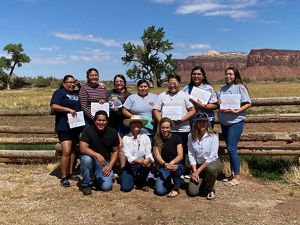

Nichole Barger: Nichole serves as the deputy chief scientist and lead global scientist for The Nature Conservancy (TNC). © Garrett Herndon

Nichole Barger: Previously, she was the research director of the Canyonlands Research Center located at the Dugout Ranch. © Stuart Ruckman

Center Pavilion: The Canyonlands Research Center has several gathering spaces for groups of researchers to convene. © Stuart Ruckman Photography

2022 NATURE Program Grads: The NATURE program, Native American Tribes Upholding Restoration and Education, is a paid internship program at TNC in Utah's Canyonlands Research Center and Dugout Ranch. © TNC
Approaching Conservation in Nevada with Empathy
September 2024 | From mining for rare earth metals to groundwater for agriculture, Ed Roberson joins Mauricia Baca, State Director for The Nature Conservancy in Nevada, to discover how TNC is addressing very unique conservation challenges across the state.
Listen here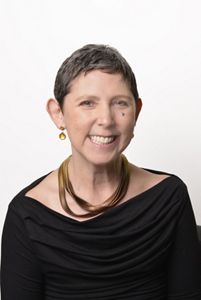
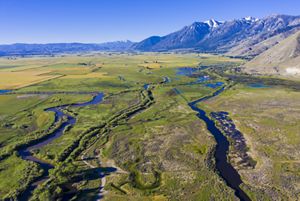
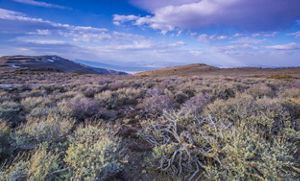
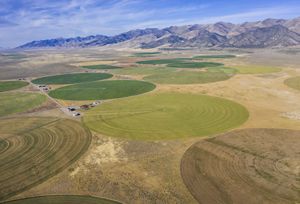
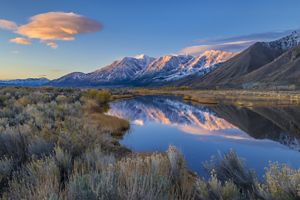

Mauricia Baca: TNC Nevada State Director Mauricia Baca © The Nature Conservancy

River Fork Ranch Preserve: Aerial view of River Fork Ranch Preserve in the Carson Valley © Chip Carroon/TNC

Sagebrush Sea: The “sagebrush sea” covers 150 million acres of 13 states, including this Nevada landscape. © Chip Carroon/TNC

Diamond Valley: Aerial view of agriculture in Diamond Valley © Chip Carroon/TNC

River Fork Ranch Preserve: River Fork Ranch Preserve is located where the east and west forks of the Carson River meet. © Chip Carroon/TNC
Working at the Speed of Trust in Alaska
January 2024 | Ivy Spohnholz is the Alaska State Director at The Nature Conservancy. In a conversation with Ed, she discusses her heart for public service and why working for meaningful change begins with building relationships, along with a background on what makes Alaska’s Bristol Bay so remarkable.
Listen here
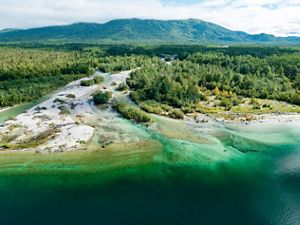
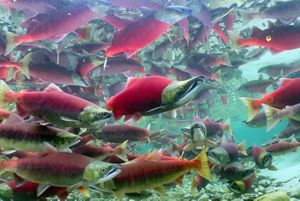
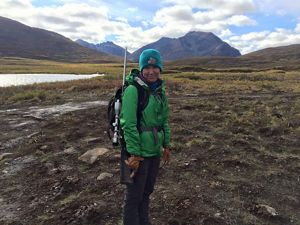


Ivy Spohnholz: Ivy Spohnholz, TNC Alaska State Director. © Matthew Waliszek

Clean Water: Bristol Bay’s many lakes and rivers are a global treasure. © Jason Ching

Wild Sockeye: Spawning sockeye salmon fill healthy streams every summer in the Bristol Bay headwaters. © Jason Satoshi Ching

Ivy Spohnholz: Ivy Spohnholz, TNC Alaska State Director, hunting in the Tanglelakes area. August 2015. © Troy Bowler

Healthy Catch: Bristol Bay is home to the planet’s largest run of wild salmon. © Jason Satoshi Ching
Tribal-Led Buffalo Restoration
October 2023 | Restoration is more than about land—American buffalo are returning to Tribal lands. Hear from Corissa Busse, Buffalo Restoration Program director at The Nature Conservancy, and Ed on the history of buffalo in North America, TNC’s focus on Tribal-led buffalo restoration, recommended resources for deeper learning and much more.
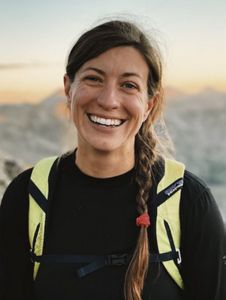

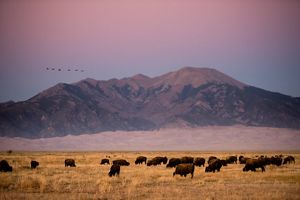
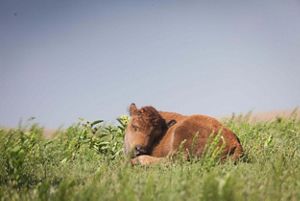

Corissa Busse: Corissa is the Buffalo Restoration Program Manager for The Nature Conservancy. © Corissa Busse

Silver Mountain Ranch Preserve: After Ted Turner, TNC is the largest owner of bison in the U.S. with herds on 12 preserves from Colorado to Kansas, Missouri, Oklahoma, Illinois, Indiana, Nebraska and Iowa. © Jason Houston

Buffalo Transfers: Buffalo from the herd at TNC's Medano-Zapata Ranch Preserve have been transferred onto Native lands. © Nick Hall

Baby buffalo: American buffalo roam and graze the spring grasses across the more than 40,000 acre Tallgrass Prairie Preserve in Pawhuska, Oklahoma. © Morgan Heim
Catalyzing Innovation in Conservation
August 2023 | With our ambitious conservation goals, innovation is a necessity. This episode dives into TNC CO's Catalyst Fund, a cutting-edge conservation funding initiative that supports forward-looking projects that enable innovation and rapid learning to test new ideas and build greater capacity for innovation over the long term.
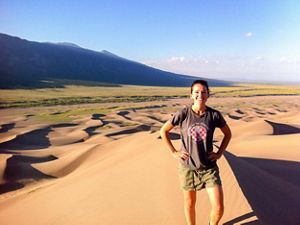
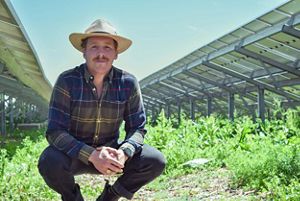
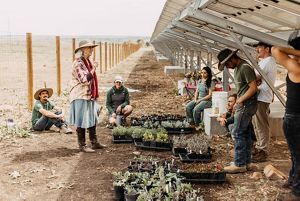


Carrie Segil: People and Culture Manager at The Nature Conservancy in Colorado. © TNC

Duncan Gilchrist and Agrivoltaics: Duncan Gilchrist, TNC CO Climate Policy Associate, at the site of an agrivoltaics project, the colocation of solar energy and food production, that TNC Colorado is working on alongside community partners near Boulder, Colorado. © Charlene Din/TNC

Agrivoltaics: A project funded by TNC CO's Catalyst Fund is an agrivoltaics site, which is when agriculture and solar panels are located in the same place. © Rhianna Truex (DAR)

Jack’s Solar Farm: TNC is using the learnings gleaned from Jack’s Solar Farm and planting vegetation with hopes to create a wildlife-friendly solar site. © Joanna Kulesza
Using Nature to Build Healthier Communities
May 2023 | What is urban conservation? How can cities help balance the needs of people & nature in a hotter and drier future? Chris Hawkins, Colorado Cities program director, joins Ed Roberson to discuss the important work that TNC & our partners are doing to improve urban tree canopy, climate resilience and more in the Denver Metro area.
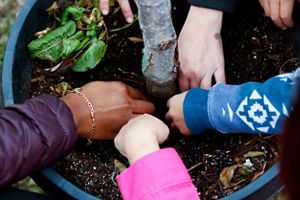


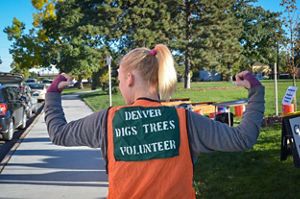

GES Denver Tree Planting: A community-led tree planting celebration in Globeville, Elyria-Swansea in Denver in fall 2019. © Kevin Mohatt

GES Tree Planting 2019: A community-led tree planting celebration in Globeville, Elyria-Swansea, Denver in Fall 2019. © Kevin Mohatt

Parks, Rivers, Trails and Trees 2022: Citywide stewardship day in Denver, Colorado. © © Evan Semón Photography

GES Tree Planting 2018: Tree planting effort on October 13, 2018. More than 120 volunteers came together in the Denver neighborhoods of Globeville & Elyria-Swansea (GES) to plant >400 plants. © Christopher Hawkins/TNC